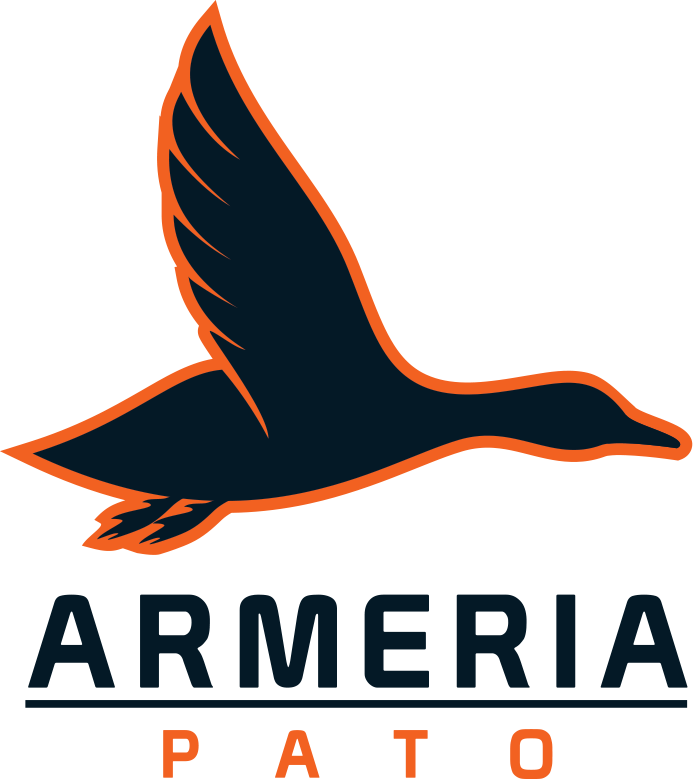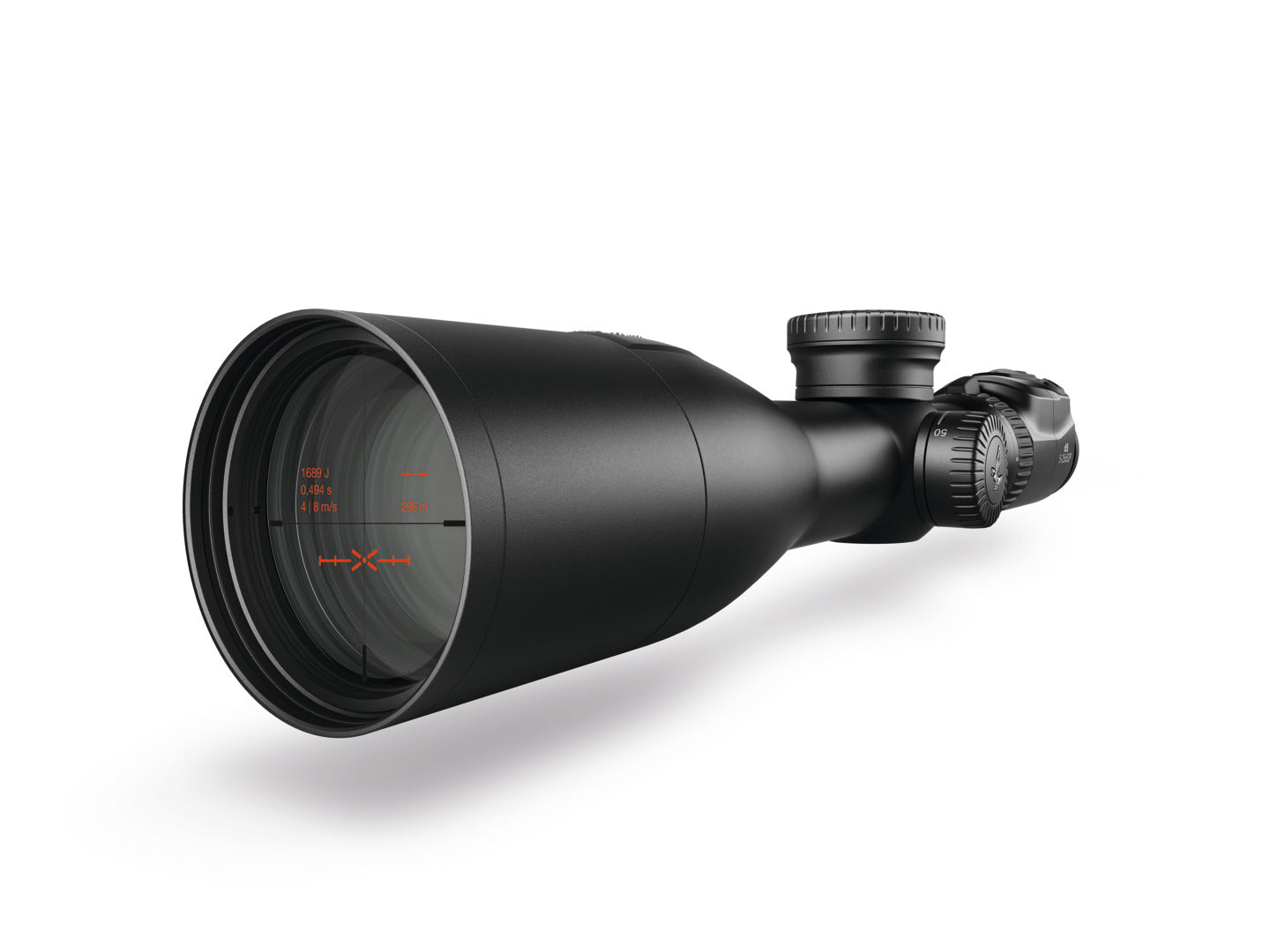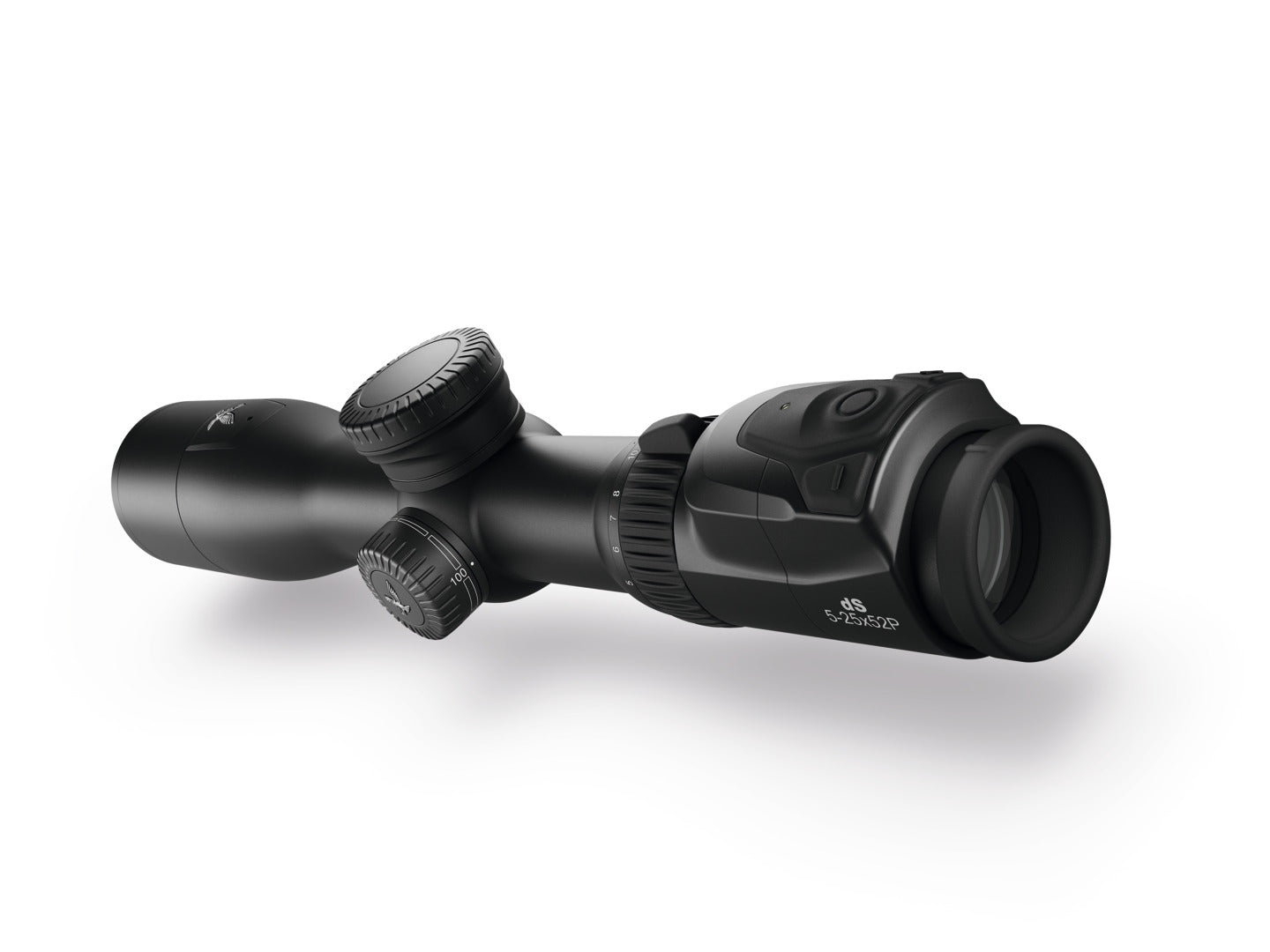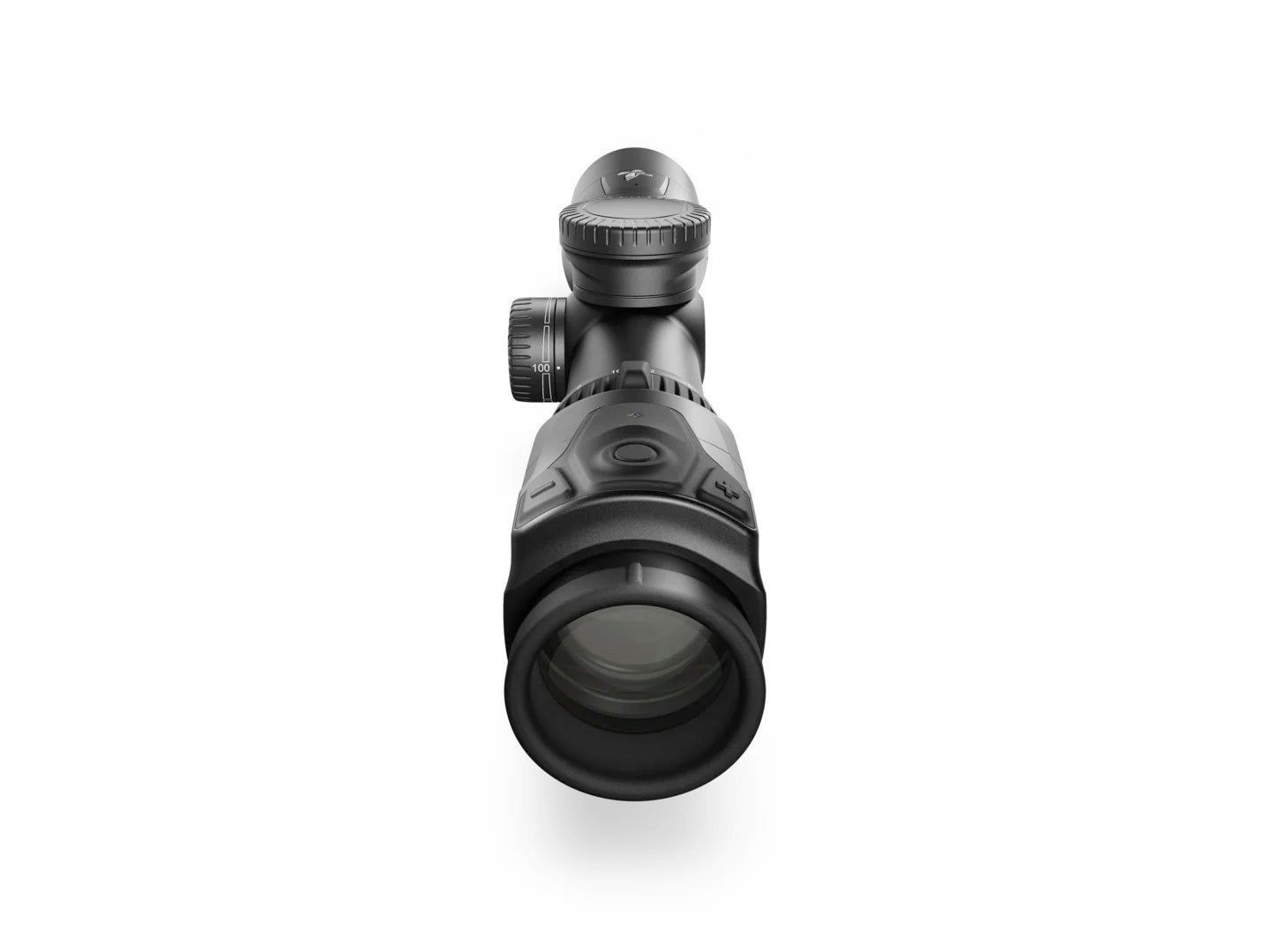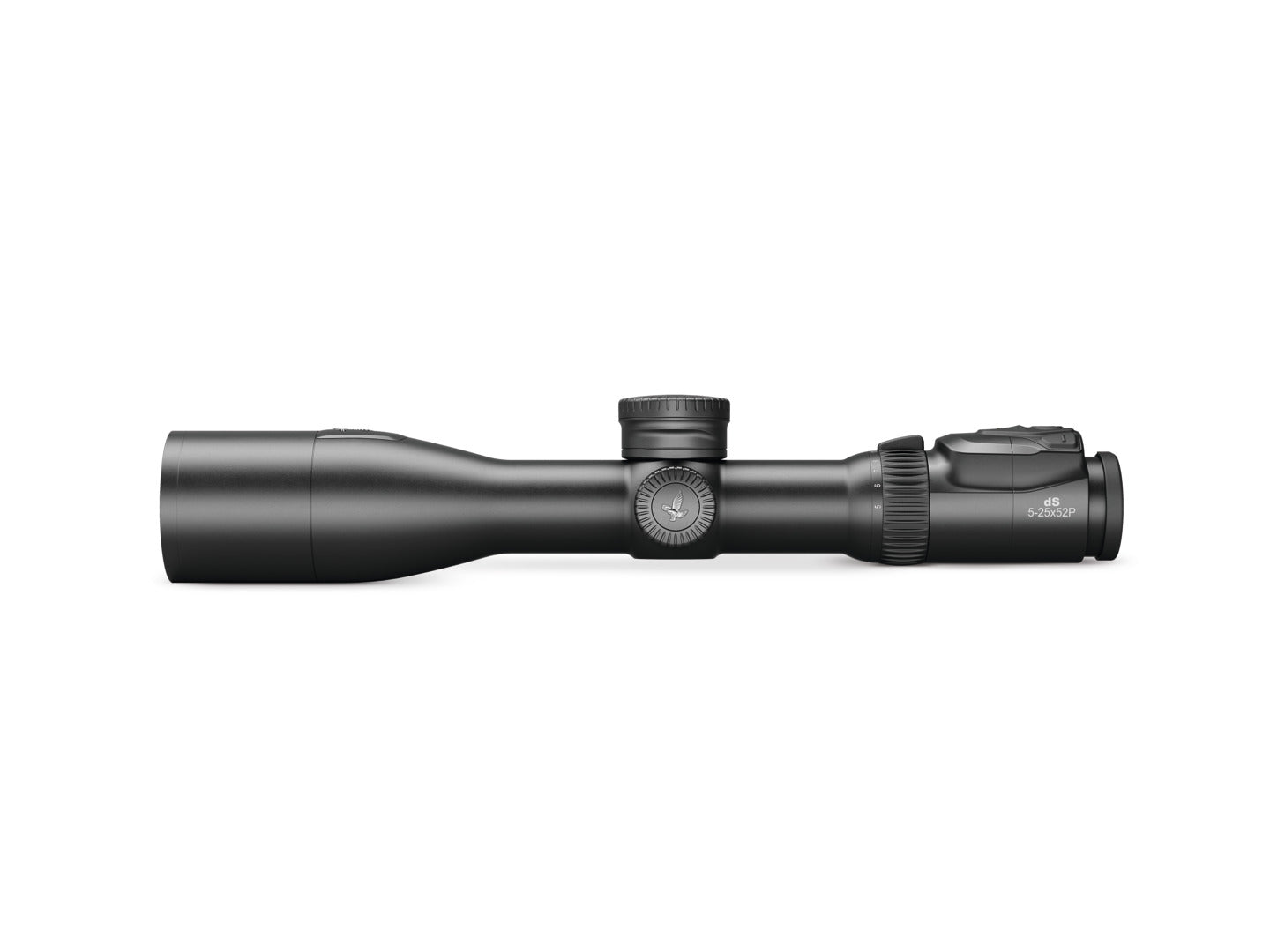INCREASES
Magnifications specify how close an object appears to be. The higher the magnification, the closer the object will appear and the smaller the field of view will be. Viewfinders often have variable magnifications (zooms), eg 2-16x. This means that continuous zooming from 2 to 16x is possible.
IMPACT POINT ADJUSTMENT
In order to always be able to aim at the crosshair from different distances, the reticle is adjusted so that the point of impact coincides with the crosshair. The point of impact is the point on the object that you want to hit. Adjustment of the reticle of the scope turrets is done via the click adjustments. Each click changes the point of impact.
ADJUSTMENT RANGE
The adjustment range describes the range within which the point of impact can be corrected by adjusting the reticle without moving the device. The adjustment range is specified in relation to the windage and elevation adjustment. We measure the adjustment range in meters per 100 meters (m/100 m) or inches per 100 yards (in/100 yd). Other manufacturers choose to specify it in MRAD (milliradians) or MOA (minutes of angle).
LIGHT TRANSMISSION
It describes the amount of visible light that can pass through an optical system and is expressed as a percentage. The diameter of the objective specifies the amount of light that can enter the optical device. This makes it a key factor for the performance of an instrument, for example, at sunset. The larger the diameter of the lens, the more light it can capture. The darker the environment, the larger diameter lens you will need. Check the exact name of the product, as the number after the “x” specifies the diameter of the lens in millimeters. For example, a device with a suffix of 2-16x50 has a lens with a diameter of 50mm.
